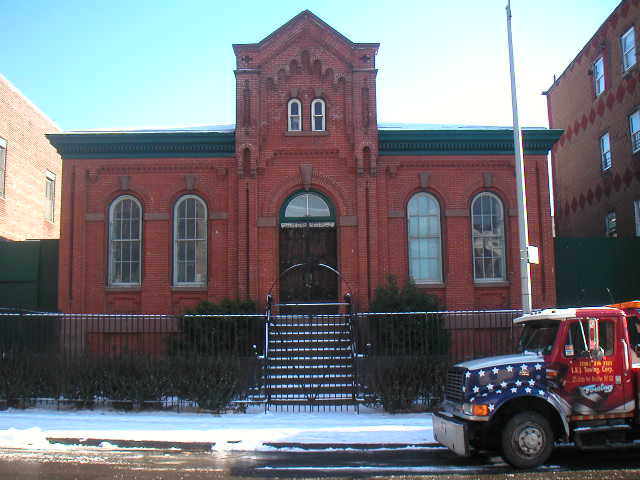 |
New York
Architecture Images- Williamsburg Brooklyn Formerly Public School 69, Brooklyn /originally Colored School No. 3 |
|
architect |
Samuel B. Leonard. |
|
location |
270 Union Ave., bet. Scholes and Stagg Sts. E side. |
|
date |
1879-1881 |
|
style |
Romanesque Revival |
|
type |
Education |
|
|
|
|
images |
 |
|
|
 |
|
The former Colored School No. 3 schoolhouse is a
one-and-half story red brick building located in the Williamsburg
section of Brooklyn. Built in 1879-81, it was designed by architect
Samuel B. Leonard, the Superintendent of Buildings and Repairs for the
Brooklyn Board of Education from 1859 to 1879. The only known "colored"
school building remaining in Brooklyn, it evokes that city's policy of
race-based school segregation during much of the nineteenth century.
Romanesque Revival in style, the school building has arched window
openings and a prominent entrance with large keystones, a raised central
section with a gable and blind arcade, corbelled brickwork, and dentil
courses. The exterior of the building remains largely intact.
Colored School No. 3 as an institution evolved from the town of Williamsburgh's original African Free School, which had been founded prior to 1841. The school was taken over by the Board of Education of the City of Brooklyn in 1855, when it was given the name "Colored School No. 3." It was renamed P.S. 69 in 1887, and was later absorbed by the school system of the City of New York after the consolidation of 1898. The Board of Education relinquished control of the building in 1934. Special thanks to www.nyc.gov |
|
|
An
Italian Romanesque miniature for a school in Williamsburg's rural days. The
Fourteen Buildings: The turn Grand Street takes at Union Avenue marks
the beginning of the site of the Fourteen Buildings. The street was laid
out between Union and Bushwick Avenues so that it would pass through the
property of a group of men who |
|
|
|
|
| with thanks to "The AIA Guide to New York", | |